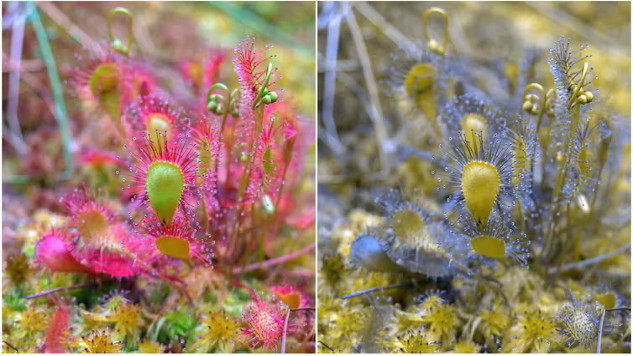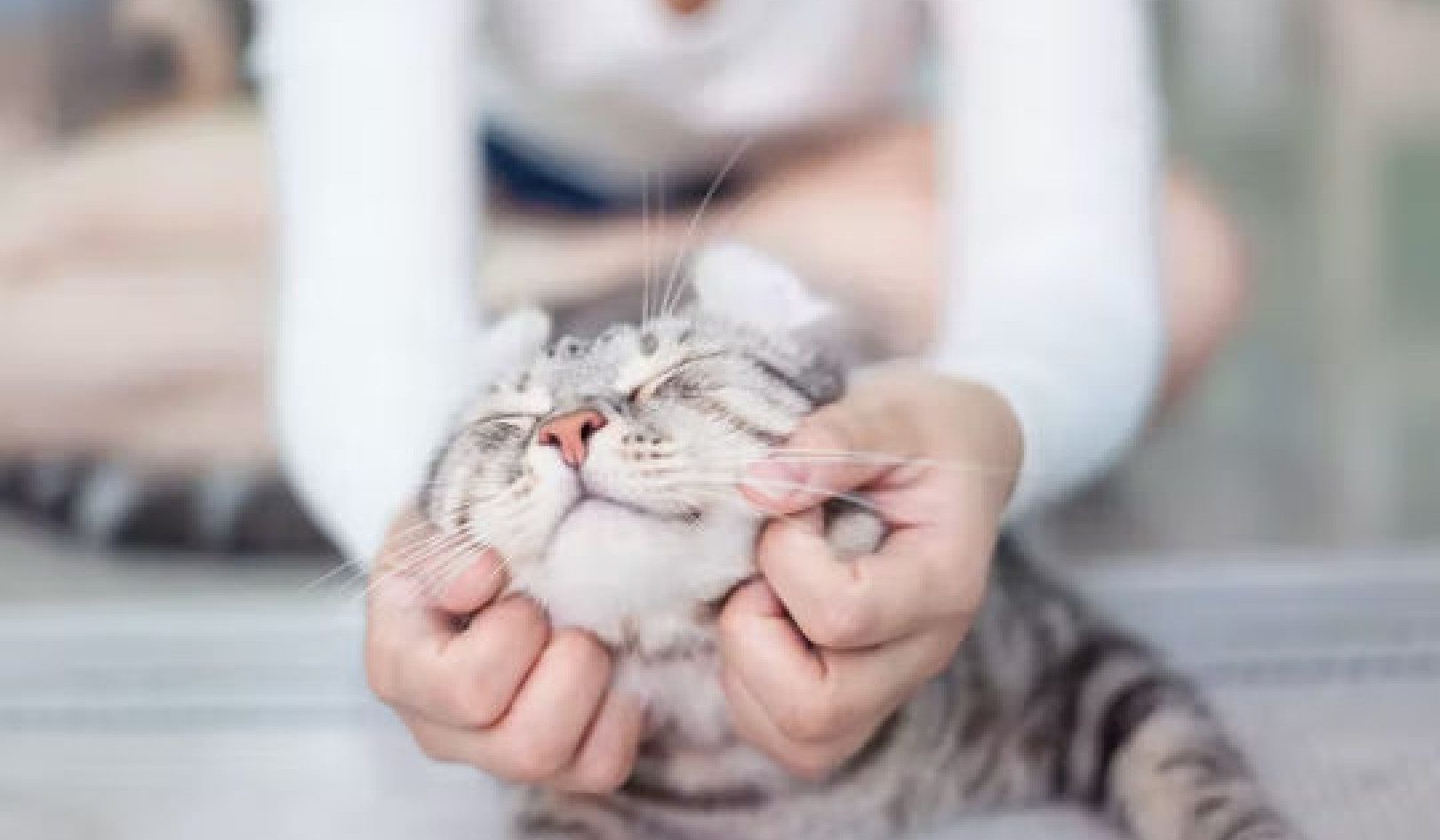
Colour blindness is associated with difficulty in perceiving red and green. (Shutterstock)
Dogs don’t see life through rose-coloured glasses, nor in black and white
For a few months now, I’ve been treating six-year-old Samuel, who has the beginnings of myopia. He’s very quick for his age and often asks me questions about tests I give him, and about what I see inside his eyes.
But the last question surprised me.
Samuel knows that some people, like his father, don’t see colours well. But what about his little poodle, Scotch, he asked?
I’m not a veterinarian and don’t want to intrude on their domain of expertise. However, as an optometrist, I can offer some insights that might help answer Samuel’s question.
Cones and rods
Ambient light is composed of particles (photons), which line up in rays. Light rays travel and strike objects. Some rays are absorbed, while others are reflected, depending on the characteristics of their surfaces and the composition of their materials. The wavelengths of the reflected rays determine the colour of the object as it is perceived by the eye.
Like everything about human vision, colour perception is complex. The retina, the sensitive part that lines the back of the eye, has two types of photon receptors: cones and rods. The cones, in the centre of the retina (fovea), perceive bright light and are responsible for colour perception.
There are three types of cones. Each type contains a specific photo-pigment called opsin, which defines its nature. The opsin is produced under the influence of specific genes. The shortest opsin (“Cone S” for short) reacts mainly to blue light (420 nm). The longer one (“Cone L”) is more sensitive to orange-red light (560 nm) and the one in between (“Cone M” for middle) is activated in the presence of green (530 nm).
However, each cone reacts to each of the rays entering the eye. For example, a red ball will produce a weak response from the S cone (3/10), a slightly stronger response from the M cone (5/10) and a strong response from the L cone (8/10).
The brain combines the signals emitted by each of these cones to form the colour it perceives. So, in the previous example, the perceived colour would be coded 3-5-8, corresponding to what we know as red. A pink colour might have the code 4-6-6, and blue, 8-6-3. Each combination of the 3-cone signals is unique, which allows us to appreciate different hues in all their variations.
That is, as long as the genetic code is intact.
The genes associated with colour vision can be mutated or defective, in which case the person will be partially or completely impaired. The best known of these anomalies is colour blindness (red-green deficiency or daltonism).
And what about animals?
Colour vision, in humans as in animals, has developed throughout evolution and results from the needs of each species according to their environment, the prey they hunt and the threats they need to avoid.
For example, birds have a fourth opsin that allows them to see ultraviolet (UV) light. Humans cannot perceive this light because our crystalline (internal) lens filters UV rays. UV rays influence birds’ behavioural decisions, including foraging and their choice of a mate.
So the colour vision of birds is more complex, with the result that the pigeon, which can perceive a myriad of colours, wins the award for best color vision among all species.
Insects also perceive UV light. This function is essential for them to spot pollen, although their colour vision is very poor. Their eyes are made up of multiple lenses (ommatidia) that perceive more movement than colour. That’s much more practical while in fast flight.
Most forest-dwelling mammals have only two opsins. That’s because they lost the one associated with orange-red over the course of evolution. This explains why, unlike humans, these animals don’t perceive the orange bibs of hunters.
Snakes, on the other hand, are more sensitive to red and infrared light, thanks to their infrared receptors. This is an advantage when it comes to spotting prey, as they can distinguish their heat even at night.
Unsurprisingly, it’s the monkey that’s closest to the human, with its three opsins. It is said to be trichromatic.
Back to Scotch
The vision of dogs — such as our friend Scotch — is quite different.
Unlike humans, dogs’ eyes are located on the side of the skull. As a result, dogs have a wider field of vision (250 to 280 degrees), but less simultaneous vision.
So Scotch’s vision of movement is well developed throughout his visual field. But his central vision is actually six times weaker than ours. This is equivalent to the vision of a very myopic person not wearing glasses. Why? Because the dog’s retina contains no fovea, and therefore fewer cones.
But while dogs eyes have fewer cones, they have more rods. And as an added bonus, they have an extra layer of the retina, called the tapetum lucidum — or carpet. When combined, these ingredients mean dogs see better in dim light and at night. This layer receives light and reflects it back onto the retina for a second exposure. This explains why your dog’s eyes seem to glow at night.
When it comes to colours, dogs are dichromats. They perceive only yellow-green and violet-blue. Colours are perceived paler, like pastels. And some colours don’t contrast: that’s why a red ball on green grass will appear to them as pale yellow on a grey background, with little contrast.
So it’s possible, depending on the colour of the ball, that Scotch will not see it, and as a result, will gaze up at Samuel with a lost look. As for the infrared, he perceives heat through his nose, not through his eyes.
Cats are also dichromats. Their vision is therefore similar to that of dogs, but their colour palette is different — more oriented towards violet and green. Having no perception of red-green, they are essentially colour-blind. They are also very short-sighted. Their clear vision is limited to a few meters in front of them.
Throughout cats’ evolution, other senses came to compensate for this. Among other things, although they only perceive certain contrasts, they are formidable at perceiving movement. Mice move quickly!
Every species adapts to its environment, and humans are no exception. Who knows what our colour vision will be like 500 years from now, after we’ve been exposed to more and more electronic devices and artificial colours?
But that’s a question for Samuel to answer when he’s older.![]()
About The Author
Langis Michaud, Professeur Titulaire. École d'optométrie. Expertise en santé oculaire et usage des lentilles cornéennes spécialisées, Université de Montréal
This article is republished from The Conversation under a Creative Commons license. Read the original article.
Books on Pets from Amazon's Best Sellers list
"The Beginner's Guide to Dog Agility"
by Laurie Leach
This book is a comprehensive guide to dog agility, including training techniques, equipment, and competition rules. The book includes step-by-step instructions for training and competing in agility, as well as advice for selecting the right dog and equipment.
Click for more info or to order
"Zak George's Dog Training Revolution: The Complete Guide to Raising the Perfect Pet with Love"
by Zak George and Dina Roth Port
In this book, Zak George offers a comprehensive guide to dog training, including positive reinforcement techniques and advice for addressing common behavior issues. The book also includes information on selecting the right dog and preparing for the arrival of a new pet.
Click for more info or to order
"The Genius of Dogs: How Dogs Are Smarter than You Think"
by Brian Hare and Vanessa Woods
In this book, authors Brian Hare and Vanessa Woods explore the cognitive abilities of dogs and their unique relationship with humans. The book includes information on the science behind dog intelligence, as well as tips for enhancing the bond between dogs and their owners.
Click for more info or to order
"The Happy Puppy Handbook: Your Definitive Guide to Puppy Care and Early Training"
by Pippa Mattinson
This book is a comprehensive guide to puppy care and early training, including advice for selecting the right puppy, training techniques, and health and nutrition information. The book also includes tips for socializing puppies and preparing for their arrival.
Click for more info or to order


























